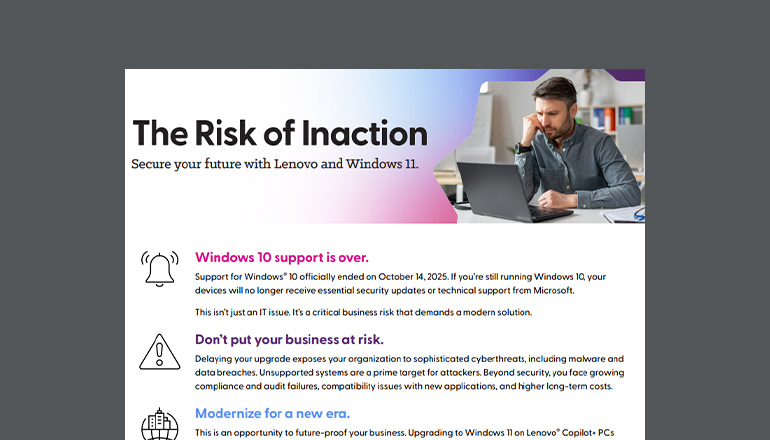Client story Corporate Training Initiative Succeeds Where Two Others Failed
When other training partners struggled to effectively support a large manufacturer’s SAP implementation, Insight stepped in to develop more than 100 courses in less than half the time.
By Insight Editor / 29 Sep 2020 / Topics: Modern workplace Change and training Software Digital transformation

Facts at a glance
Client industry:
Manufacturing
Size of company:
200,000+ employees across 140 manufacturing locations
Challenge:
The client needed to successfully execute a multiphase SAP® implementation in order to meet their goals for increased productivity and profitability.
Solution:
Insight began by auditing previous failed attempts at implementation, then developed and implemented a more manageable project plan structured to reduce risk.
Results:
- Developed 100+ training courses in half the time allotted to previous partners
- Redefined training curriculum into a fully sustainable solution
- Prioritized training materials to maximize previous investments
- Improved Level 1 (L1) evaluations of quality and performance
Solution area:
Insight’s Digital Innovation solutions help clients incorporate emerging tech into their business operations to improve the user experience.
A large manufacturer had an 85-year history of providing best-in-class products and services to customers all around the world. But the need for increased productivity and improved profitability — driven by an ever-demanding global marketplace — required a higher level of company performance.
In response, management initiated a multiphase, multiyear SAP implementation which impacted almost every aspect of the business: finance, accounting, procurement, order management, manufacturing and assembly, quality and plant maintenance, engineering, inventory and warehouse management. Nearly all department functions and processes were redefined as a result of the initiative.
If at first you don’t succeed...
In every SAP implementation, the end users’ ability to utilize the system to perform daily job functions is every bit as important as how the system is configured. The scope, pace and impacted audience for this implementation made it a monumental challenge in terms of successful training development and delivery.
After establishing the enterprise business process transformation project, the client engaged its SAP integrator to support the initiative through training and development. However, the training the integrator developed was too high-level, wasn’t job-specific or task-based and was deployed without a well-defined strategy. As a result, it left end users unable to perform their job functions at go-live.
Following this failed pilot, the client selected its second training partner — but again experienced disappointing results. The redesigned training strategy identified more than 400 required courses. With calculated training seat time inflated by 25–50%, the partner spent the next 11 months attempting to develop more than 1,000 hours of curriculum.
The client made significant investment in the development of training materials recommended by the new strategy. But by the time training deployment was scheduled for the next series of impacted sites, less than 50% of the required curriculum development was complete.
Shortcuts were taken in an attempt to accelerate development, resulting in compromised quality. No attention was paid to the training client or data strategy, and already over-taxed team members — who had no familiarity with the flow or intent of the training courses — were required to load training data prior to deployment.
Auditing for best practices
Recognizing the issues at hand, the client contacted Insight. Our Digital Innovation team began by completing an extensive audit of the SAP training curriculum to compare the current state to industry best practices. We focused on three critical areas:
- Curriculum structure and design
- Curriculum components and development process
- Training program project management
To perform the audit, Insight experts met with key client leadership, curriculum designers and developers, both within and outside the training organization. We reviewed all project-related training mechanisms, including project management tools and trackers, training templates and other in-progress deliverables.
We then made recommendations to help turn the program around in an accelerated timeframe, providing the client with short-term tactical plans for realignment. Insight and the client set a goal to gradually redefine the program to better serve the impacted end users and, ultimately, the client organization as a whole.
Take control of onboarding, training and development for your remote workforce with SAP Enable Now. Get tips and strategies from our expert in this on-demand webinar.
Recommended course correction
As a result of our initial audit, Insight made the recommendation to restructure the curriculum from an enterprise profile-based approach to a process-based approach in order to limit the number of modules, reduce redundancies and create holistic documentation of impacted processes.
We suggested conducting stability analysis to determine which modules in scope included content that was least likely to change. Understanding these factors would allow the client to concentrate development efforts on those areas that were most impactful to the business.
Other recommendations included recalculating course durations based on the transactions covered in each course, as well as revisiting the current structure, purpose and templates of training components to correct quality issues before the next go-live date.
We aimed to help the organization develop a manageable project plan that organized tasks into chronological project phases, structured to ensure training materials would be completed prior to corresponding project milestones. This involved establishing project status reporting requirements whereby issues and risks were documented, communicated and systemically resolved. These actions helped to better define and enforce the process used to develop course materials moving forward.
Third time’s the charm
Following the audit, the client invited Insight to staff the deployment side of the training team in order to best support the implementation. More than 20 Insight instructors were assigned to roll out the redesigned training materials still in development with the client’s training partner.
Insight teammates rewrote many of the training materials to meet the client’s needs, serving as conduits to transfer much-needed information from project implementation teams to site power and end users.
Thanks to Insight’s dedication, the impacted sites went live on the SAP system successfully. This was attributed, in part, to the ingenuity and perseverance of the Insight staff members who had been tasked with the job of delivering the training under less-than-ideal circumstances.
Ongoing support and sustainable adoption
Following the successful delivery of training to these initial sites, the client awarded Insight the contract to develop and deploy all future training in support of the client’s SAP implementation. As part of our ongoing partnership, our team has redefined the training curriculum into a process-based, sustainable solution that truly reflected the processes impacted by the implementation.
We prioritized training material development to give the most stable, critical and impactful processes primary, focused attention. This helped maximize the client’s initial investment and dramatically reduced redundant work in development. We also stabilized the material development process and solidified the templates used for each of the training components in scope.
In total, Insight developed more than 100 courses — more than 50% of the entire curriculum in scope — in less than half the time allotted to previous training partners. Since our original engagement, Level 1 evaluations improved drastically for both training material quality and instructor performance in each wave of deployment.
Throughout all aspects of the training program, Insight Digital Innovation teammates provided the thought leadership and expertise needed to drive continuous improvement and ensure sustainable adoption and mastery of the SAP solution.



